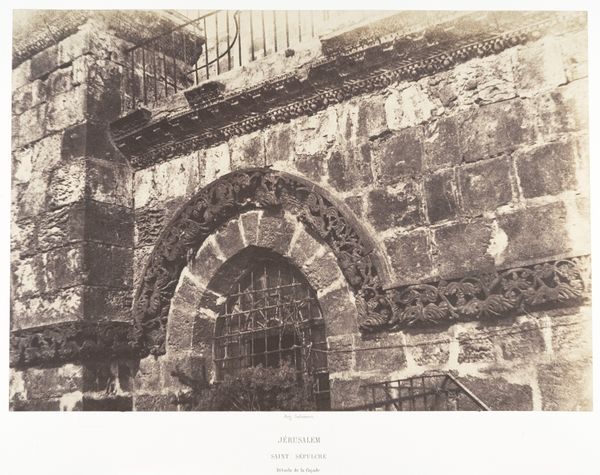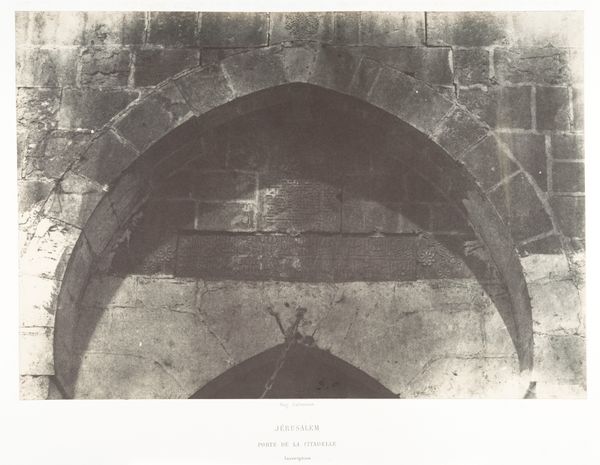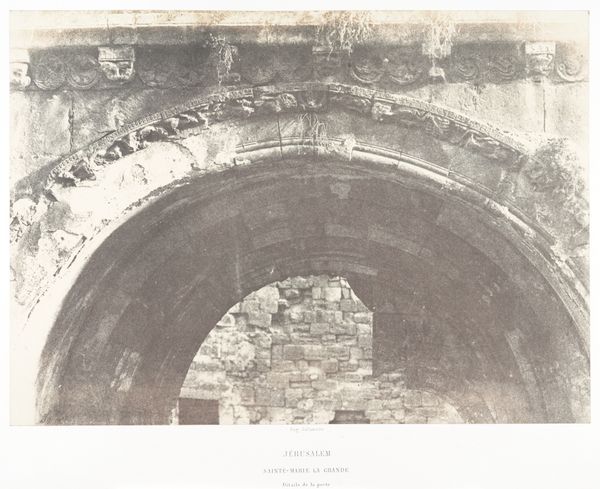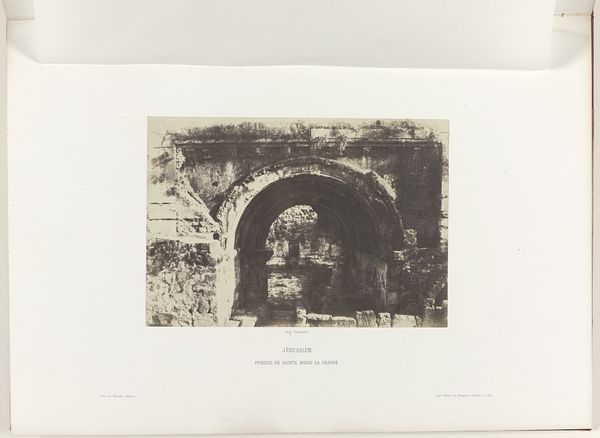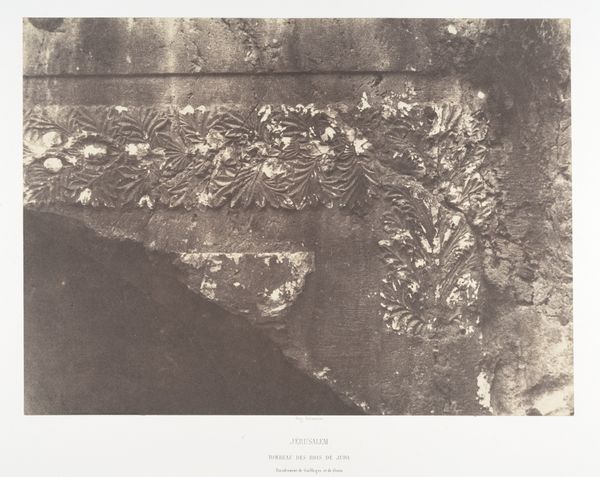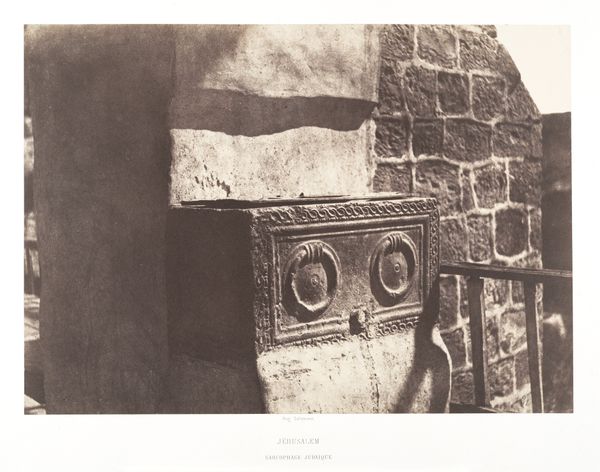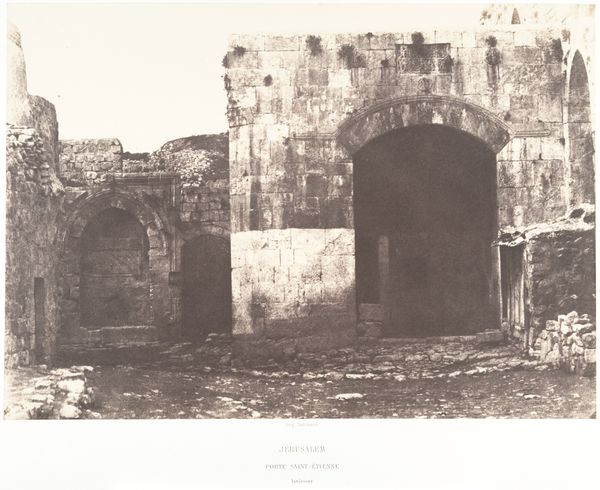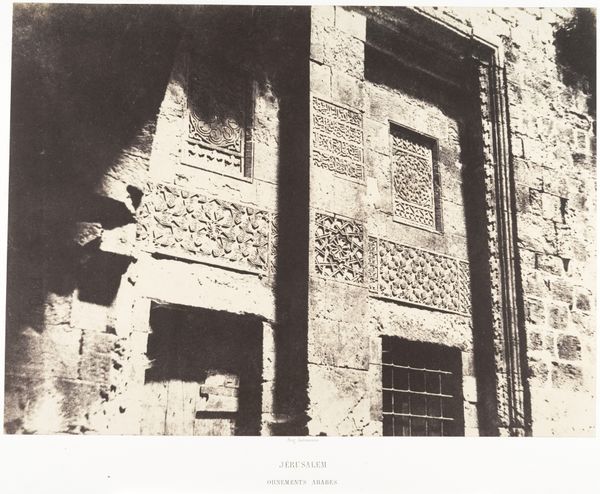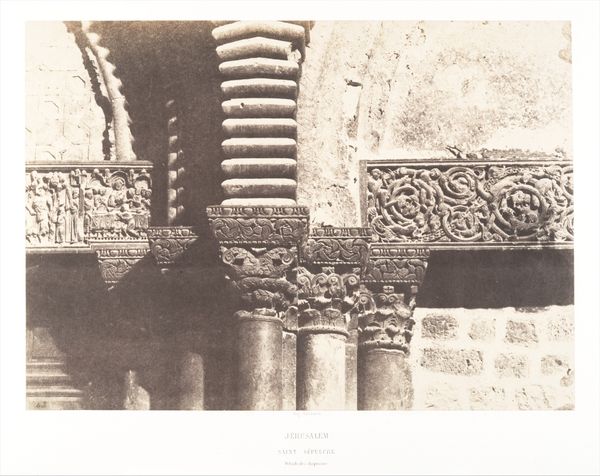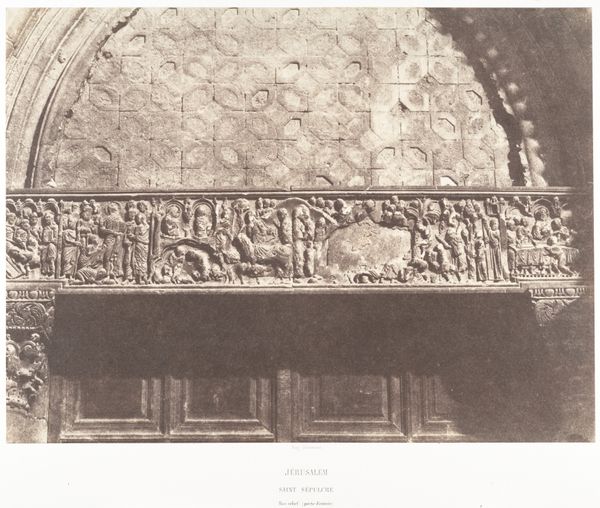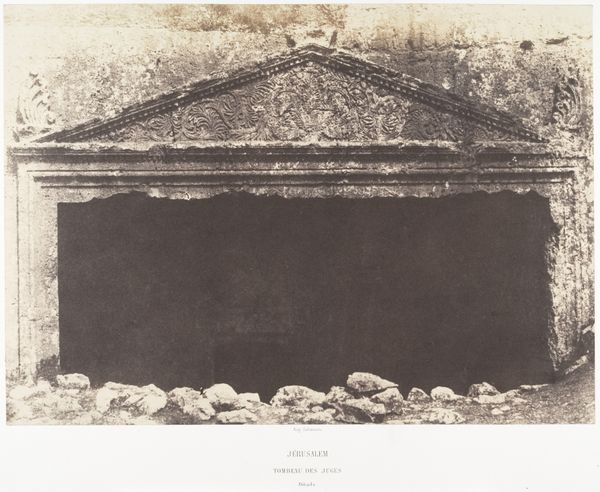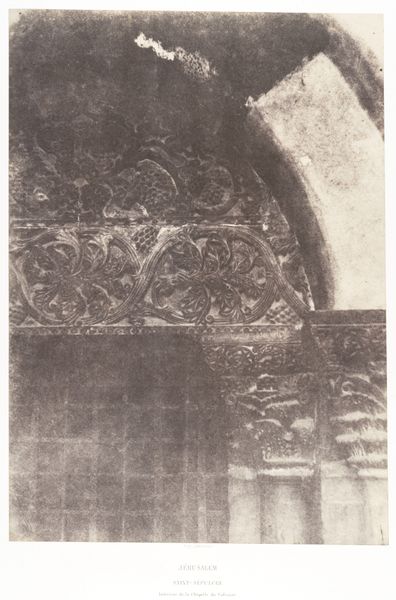
print, photography, architecture
# print
#
landscape
#
photography
#
islamic-art
#
architecture
Copyright: Public Domain
Editor: This is Auguste Salzmann’s photograph, "Jerusalem, Porte de Jaffa, Inscription," taken between 1854 and 1859. It's a beautifully detailed image of the stone archway, but feels somewhat austere. What stands out to you when you look at it? Curator: The weight of history, undeniably. The inscription itself, rendered in elegant Arabic calligraphy, is more than just text; it's a potent symbol of cultural memory. Note how it's integrated architecturally; do you notice its placement above the gateway? Editor: Yes, it’s very prominent. Almost like a title. Is the script of any particular significance? Curator: Indeed. Calligraphy, especially in Islamic art, operates as a spiritual and artistic practice. Each curve and flourish carries profound meaning. The photograph captures a fleeting moment but hints at enduring values, cultural identity, and the presence of faith inscribed onto the landscape. What kind of emotional impact do you think the image evokes for viewers today, compared to its original audience? Editor: I imagine a contemporary viewer sees it more as a historical document. For the original audience, maybe it evoked a sense of shared identity and pride. Curator: Precisely. Consider how photographic technology itself—new at the time— intersects with that cultural self-representation. Salzmann’s work inadvertently freezes a moment, but it invites endless symbolic readings across different eras. Editor: So the power lies in that continuous dialogue between the past and the present? Curator: Absolutely. These symbols offer a tangible connection, inviting us to contemplate the shifting, yet persistent nature of cultural memory.
Comments
No comments
Be the first to comment and join the conversation on the ultimate creative platform.
